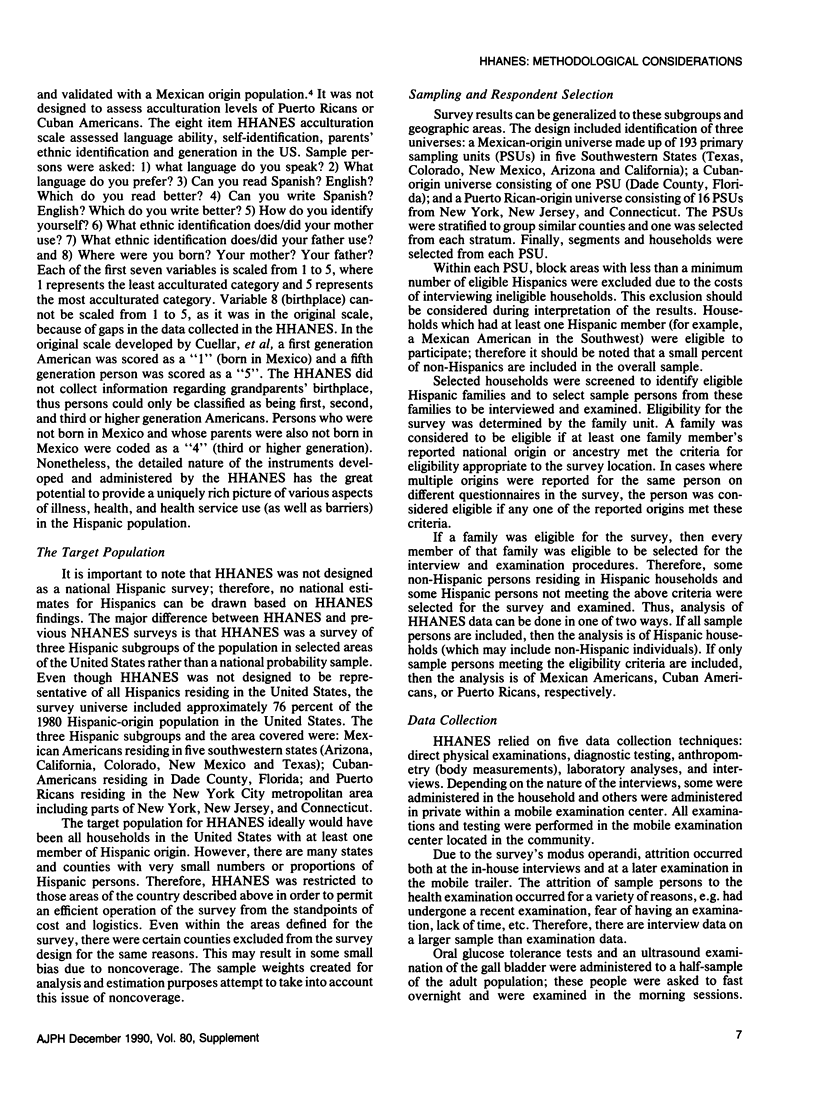Abstract
The Hispanic Health and Nutrition Examination Survey (HHANES) was the first special population survey undertaken by the National Center for Health Statistics. The HHANES was designed to assess the health and nutritional status and needs of Mexican Americans, mainland Puerto Ricans and Cuban Americans. Data were collected using five data collection techniques: direct physical examinations, diagnostic testing, anthropometry, laboratory analyses, and interviews. Unlike other surveys conducted by the National Center for Health Statistics, the HHANES was not designed as a national survey. The HHANES was a survey of three Hispanic subgroups of the population in selected areas of the United States with a survey universe that included approximately 76 percent of the 1980 Hispanic-origin population in the United States. This article discusses statistical issues that should be addressed by researchers when analyzing HHANES data. Specifically, analysts need to account for the complex sample design, nonresponse bias, potential non-coverage bias, and the regional nature of the HHANES sample.
Full text
PDF






